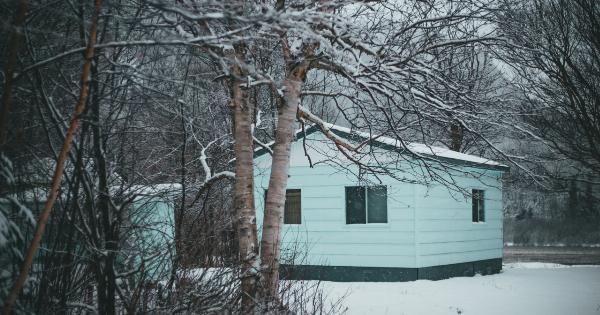As winter approaches, many of us will begin to experience the freezing temperatures that come along with it. While it may be beautiful to see a fresh blanket of snow outside, the cold can also cause problems for homes and businesses.
One issue that arises when temperatures dip below freezing is the formation of frozen edges.
What are Frozen Edges?
Frozen edges occur when the temperature drops low enough to freeze the ground around a structure. This can cause the soil to expand, pushing against the foundation of a building.
If this continues for an extended period, it can lead to the foundation becoming unstable and even cracked. In addition, frozen edges can also cause problems with drainage around the building and lead to water damage.
Detecting Frozen Edges
One of the first signs of frozen edges is the appearance of cracks in the foundation or walls of the building. These cracks are typically small at first but can grow over time if the issue is left unaddressed.
Additionally, if you notice that doors and windows are becoming harder to open or close, this could be a sign that the foundation has shifted due to frozen edges.
Preventing Frozen Edges
The best way to prevent frozen edges is by ensuring that your building’s foundation is properly insulated. This can help to keep the ground around the building warmer and reduce the likelihood of frozen edges forming.
Additionally, keeping gutters and downspouts clear of debris can help with drainage and prevent water from pooling around the foundation.
You can also take steps to prevent frozen edges by making sure that the soil around the building is properly graded. This will help to encourage water to flow away from the foundation and can reduce the risk of water damage.
Repairing Frozen Edges
If you suspect that your building has developed frozen edges, it’s essential to take immediate action to prevent the issue from becoming worse. The first step is to remove any standing water around the foundation.
You can do this by using a sump pump or by digging drainage channels around the building.
Once the water has been removed, you should inspect the foundation for any cracks or damage. If you are unsure what to look for, it’s best to call in a professional to assess the situation.
Depending on the severity of the damage, the foundation may need to be repaired or reinforced to prevent further shifting.
Conclusion
Frozen edges are a common problem that can cause significant damage to buildings if left unchecked.
By keeping an eye out for signs of trouble and taking steps to prevent frozen edges from forming, you can protect your home or business from the worst effects of winter weather.






























